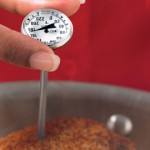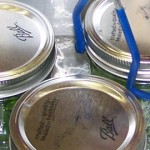
Photo: USDA ARS
Freeze-drying was invented in 1906 in Paris, France. Since then, it has been used in a variety of ways from preserving blood serum during World War II to preserving food, pharmaceuticals, and more.
Today, the global freeze-dried food market is growing at 7.4% per year. Fruit makes up 32% of the market share. North America produces the most freeze-dried foods.
The technical term for freeze-drying is lyophilization. A solvent (water) and/or a suspension medium is crystallized at a low temperature and removed by sublimation. This means the water moves from a solid state to a gaseous state without melting. The food freezes quickly and at low temperatures. Pressure is applied with some heat. This removes about 95% of the moisture. Another drying phase removes excess unfrozen water molecules. The entire process can take a couple days.
Freeze-drying produces high quality foods. But the method and equipment are expensive. The energy required is almost double that required in conventional drying. The equipment is four to eight times higher than conventional drying equipment.
Source: www.ift.org/food-technology/past-issues/2018/february/columns/processing-freeze-drying-foods.aspx




